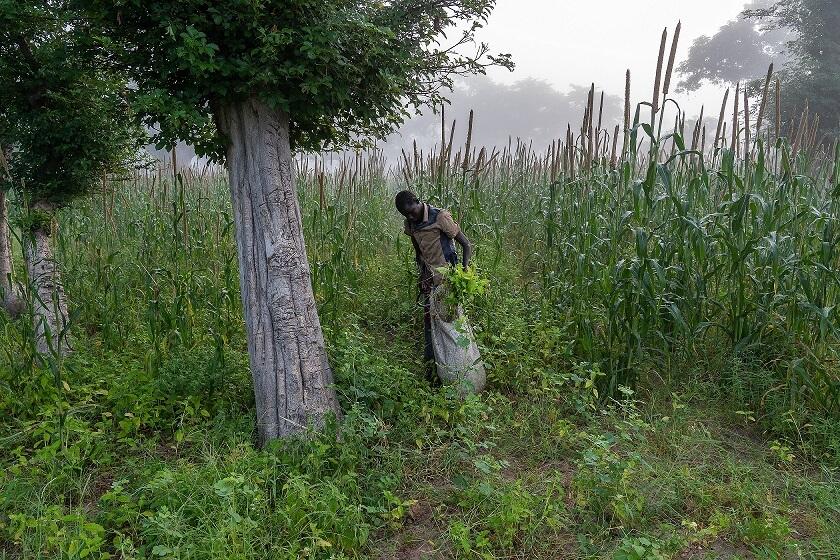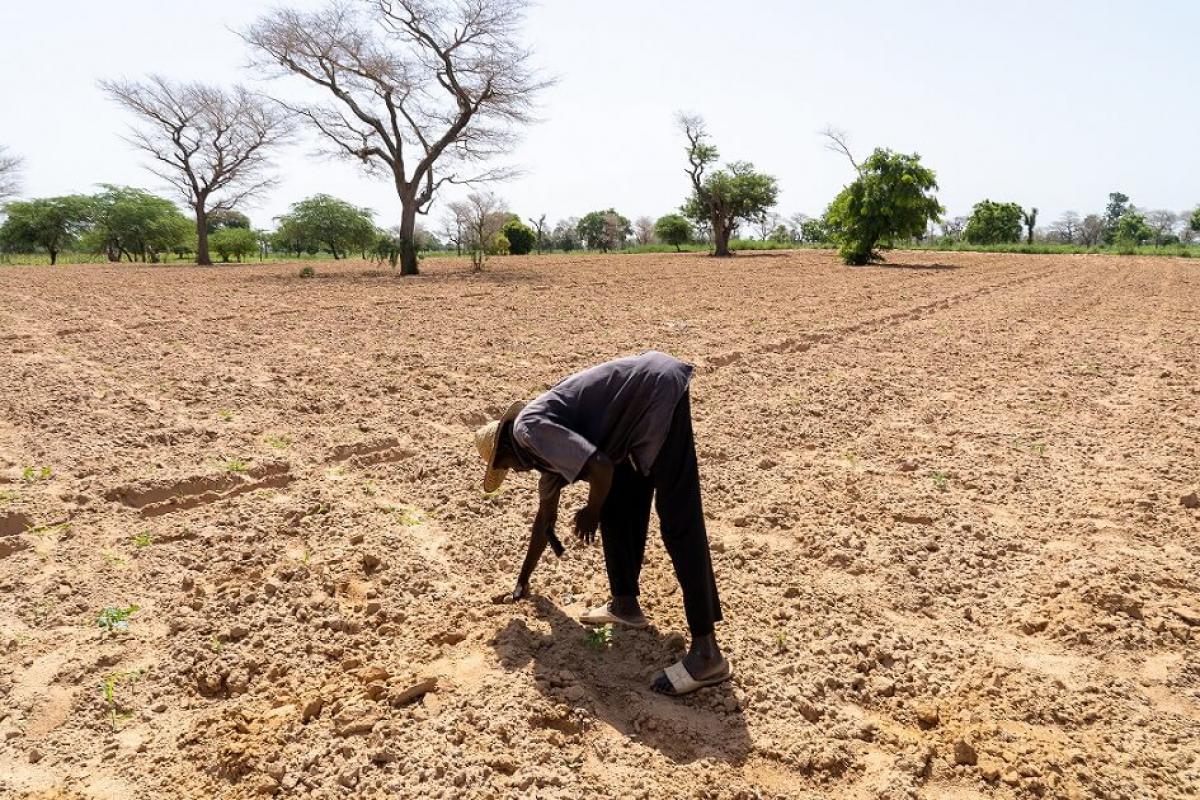- Home
- Worldwide
- CIRAD worldwide
- Projects
- DSCATT project
Dynamics of carbon sequestration in the soils of tropical and temperate farming systems - DSCATT

Gathering fodder in the early morning to feed cattle. Niakhar, Fatick department, Senegal. October 2019 © Bastien Defives
Issues
Prompted by the need to sequester carbon in soils to cope better with climate change, several units in the Labex AGRO laboratory of excellence are working with some of their main partners to pool their research on the dynamics at work in soils, the farming systems they support, and the rural territories where they are found. The ai mis to shed new light on soil fertility, the sustainability of farming practices, and the potential to improve them while boosting soil carbon sequestration.
Description
The project is being implemented at three sites (in Senegal, Zimbabwe and France), with data provided from a fourth site (in Kenya).
On a plot scale, the research is looking into the links between biomass production and carbon sequestration. This involves establishing reference greenhouse gas balances for plots in which nutrient dynamics, the effects over time of organic matter applications, and the role of roots are studied.
On a farm scale, carbon flows are being quantified with a view to proposing practices likely to boost the complementarity of agricultural activities.
On a territory or farmers’ network scale, the various compartments within agro-ecosystems and organic matter flows are being inventoried. Depending on the socioeconomic and biophysical context, several types of change are considered, along with their consequences for sequestration dynamics, farmers’ incomes and natural resources.
This scientific knowledge and the views of the farmers concerned are being debated and used for a crosscutting assessment of several strategies for sequestering carbon in agricultural soils. The knowledge enriched by the project is systematized, shared and disseminated to several target audiences by means of a range of communication and assessment tools.
Expected impacts
- Knowledge will have been generated of the conditions in which carbon is captured by agricultural soils and of the socioeconomic dynamics that determine soil sequestration potential.
- Several sequestration strategies will have been described in quantitative and qualitative terms, to facilitate the choice of farming practices in Senegal, Zimbabwe and France, as regards integrated crop-livestock farming, agroforestry and conservation agriculture.
- Soil degradation dynamics could eventually be reversed, thanks to better consideration of soil life and of the objectives of and constraints facing the farmers who cultivate those soils.
Contract partners
- Institut de la Recherche Agronomique du Sénégal (ISRA - Senegal),
- University of Zimbabwe, Institut de recherche pour le développement (IRD - France),
- AGROOF (France),
- Institut national de recherche pour l'agriculture, l'alimentation et l'environnement (INRAE - France),
- International Institute of Tropical Agriculture (IITA - Kenya),
- University of Embu (Kenya)

























